|
Yeshua is the Mashiach, Saviour and founder of the
Christian Church. Some know Him by a more personal Name.
To Christians, He is the Lord of their lives. Regardless
of His title, Yeshua HaMashiach is the most interesting
figure in human history. Although He lived on earth only
33 years, He has had the greatest impact of any person
who ever lived: even on those who do not believe He is
YHVH’s Son. The Bible describes Yeshua HaMashiach in
detail: His life, His work and His teachings; in the
four books called the Gospels. Each of the four Gospels
has a distinctive purpose. Matthew, for instance,
presents Yeshua as the long-awaited King of the Jewish
people. Mark focuses more on Yeshua as the Servant of
all. Luke tends to present Yeshua in a softer light,
showing His amazing compassion for the poor. Finally,
John describes a love relationship with Yeshua. Each
author wrote about Yeshua for a different reason. They
arranged the events of Yeshua’s life slightly
differently. A picture of the same person from four
different angles is the result. Yet all of the Gospels
agree on one thing: Yeshua is the Lord of lords and the
King of kings.
THE LIFE OF YESHUA
The following sections present the main events in what
may be regarded as the chief stages in the life of
Yeshua. These stages show a definite progression from
HaMashiach’s incarnation or entrance into the world to
His dying moments on the cross. The Gospels do not read
like an ordinary biography. Their story is not so much
about the life of Yeshua as it is about YHVH’s story.
The whole presentation of HaMashiach’s life centres on
the cross and His triumphant resurrection. It is YHVH’s
message to humanity rather than a plain historic account
of the life of Yeshua.
THE INCARNATION
The major event of this initial stage was the
Incarnation. Only Matthew and Luke give accounts of
Yeshua’s birth. John reflects on what preceded the
birth.
 YESHUA’S PRE-EXISTENCE YESHUA’S PRE-EXISTENCE
It may seem strange that John began his Gospel with a
reference to the Word (John 1:1), but it is in this way
that he delivers to the reader an exalted view of Yeshua.
John saw Yeshua as existing even before the creation of
the world (1:2). In fact, he saw Him as having a part in
the act of creation (1:3). Therefore, when Yeshua was
born, it was both an act of humiliation and an act of
illumination. The light shone, but the world preferred
to remain in darkness (1:4-5, 10). Therefore, anyone
reading John’s records of the life of Yeshua would know
at once, before even being introduced to the man named
Yeshua that this was no ordinary man. The account of His
life and teachings could not be properly understood
except by acknowledging that Yeshua had always existed.
THE VIRGIN BIRTH OF YESHUA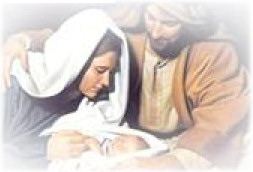
Yeshua was surrounded by controversy even from the time
of His birth. The birth stories in Matthew 1 and Luke
1-2 say that Yeshua HaMashiach was conceived of the
Ruach HaKodesh (Holy Spirit) and born of the Virgin
Mary. In order for Yeshua to be fully YHVH and fully
man, He could not have been naturally conceived. His
miraculous birth is no side note; it is central to the
story of Yeshua. At the same time, many critics deny
this miracle, stating that the early Christians created
a rumour.
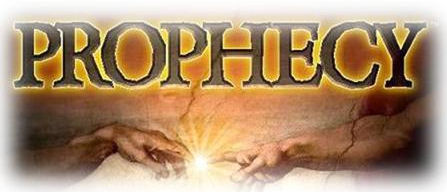 THE OLD TESTAMENT PROPHECY THE OLD TESTAMENT PROPHECY
Isaiah 7:14 (King James Version) says that a “Virgin”
shall “conceive and bear a son…Immanuel.” Matthew
1:22-23 expressly states that this was fulfilled in
Yeshua’s birth. This passage has been greatly debated,
especially since another credible translation, the
Revised Standard Version, changed the King James Version
“virgin” to “young woman,” based on the ambiguity of the
term in the original manuscripts. The Hebrew ‘Almah
refers generally to a young girl who has passed puberty
and thus is of marriageable age. Another Hebrew word (Bethulah)
specifies a woman who is a virgin. The early
translators, nevertheless, translated ‘Almah as
parthenos, which denotes a virgin. The following are
four popular interpretations concerning the “virgin”
prophecy:
-
The “virgin” (Isaiah 7:14) was Ahaz’s new wife and
the son was Hezekiah: contemporary characters of
Isaiah. But Hezekiah was nine years old when Ahaz
began to reign, so this prophecy must look to the
future.
-
She was Isaiah’s wife and the son was Maher-shalal-hash-baz.
Many scholars support this interpretation because
the definite article with ‘Almah seems to indicate
that “the woman” was known to Isaiah and Ahaz. Also,
Isaiah 7:14-16 seems to indicate that the prophecy
was to be fulfilled in Isaiah’s time. The difficulty
here is that Isaiah’s wife already had a son and so
she could not be called a virgin, ‘Almah.
-
The prophecy is purely about Yeshua HaMashiach. This
is the traditional evangelical position, based on
the Name of the Child; Immanuel, “God with us”; and
the reference (Isaiah 9:6-7; Isaiah 11:1-5), which
points to a divine person.
-
Still, there is a fourth interpretation, which says
the prophecy refers to both Isaiah’s day and a
future day. This view takes into account the
historical fulfilment intended in Isaiah 7:15-16
while seeing the future as being fulfilled through
the virgin birth of Yeshua, as indicated in Matthew
1:22-23.
THE GOSPEL RECORDS
Neither Mark nor John provides an account of the birth
of HaMashiach; the actual event is only in Matthew and
Luke. Both agree that a Virgin Mary, conceived of the
Ruach HaKodesh (Holy Spirit) and bore a Son, Yeshua.
Matthew’s account is simpler and more direct. Yeshua is
called the “HaMashiach,” the son of David (Matthew 1:1),
who signals the beginning of the Kingdom of YHVH. Yeshua
fulfilled Isaiah’s prophecy (1:22-23) and was born of a
virgin (1:18-20). Therefore, Yeshua is “YHVH with us,”
now come to “save His people from their sins” (1:21).
The scene where Joseph decides to privately divorce Mary
is added to give further evidence that Yeshua was
miraculously conceived. Luke told the nativity story
from the perspective of Mary. The angel Gabriel visited
her and announced that she would give birth to the
Mashiach (Luke 1:26-38). She conceived miraculously by
the Ruach HaKodesh, as was foretold by the angel
Gabriel: “The Ruach HaKodesh will come upon you;
therefore the child to be born will be called Holy, the
Son of YHVH” (Luke 1:35, RSV). Luke says Mary willingly
surrendered to the purposes of YHVH. John simply says
that the Word became flesh and dwelt among us. Matthew
and Luke fill in some of the details of how this
happened. Each approaches the subject from a different
point of view, but the supernatural is evident in both.
The coming of Yeshua is announced beforehand, through
dreams to Joseph in Matthew’s account (Matthew 1:20-21)
and through an angel to Mary in Luke’s account (Luke
1:26-33).
Matthew leaves his readers in no doubt that the one to
be born had a mission to accomplish; to save people from
their sins (Matthew 1:21). Luke sets his story of Yeshua’s coming in an atmosphere of great rejoicing. He
includes exquisite songs, which have formed part of the
church’s worship ever since (Luke 1:46-55, 68-79). The
visit of the wise men in Matthew 2:1-12 is significant
because it links the beginning of the Gospel to its
ending (compare to 28:19-20). A similar emphasis is
introduced in the angel’s announcement to the shepherds
in Luke 2:14 and in Simeon’s song (2:32), where he
predicts that Yeshua would be a light for Gentiles as
well as a glory for Israel. The flight into Egypt for
safety (Matthew 2:13-15) shows the contribution of a
gentile nation in providing protection for a Jewish
child. One feature of the birth stories in Matthew and
Luke is that they are both linked to genealogies. It is
difficult to harmonize these genealogies since they
appear to be drawn from different sources, but the
purpose in both cases is to show that Jesus was
descended from Abraham and David. The latter fact gave
rise to Yeshua’s title as Son of David. Luke was the
only Gospel writer who attempted to link the coming of
Yeshua with events in secular history. Since he was a
doctor by trade, some imagine his attention to detail
shows in his writing. Although problems arise over the
dating of the census of Quirinius (Luke 2:1-2), Luke
mentions it to demonstrate that the Christian faith is a
historic faith centred on a historic person.
THE SIGNIFICANCE OF THE VIRGIN BIRTH
Some of the earliest church fathers stressed the virgin
birth more than any other event in Yeshua’s life as
proof of the Incarnation and that HaMashiach was indeed
YHVH. It was essential to their Christology; the
significance of HaMashiach’s divine role. Justin Martyr
and Ignatius defended the virgin birth against opponents
at the beginning of the second century. The virgin birth
continued to be a hot topic for the next three
centuries. Gnosticism was a belief that HaMashiach
descended directly from heaven and so He was never truly
human. On the other hand others, such as the Arians,
also denied the virgin birth because they wanted to say
He was never truly YHVH. They say Yeshua was “adopted”
as Son of YHVH at His baptism. The Council of Nicaea in
AD 325 affirmed that Yeshua was truly YHVH and then the
Council of Chalcedon in AD 451 stated that Yeshua was at
the same time truly human and divine. The Apostles’
Creed from the fifth century is still often recited in
modern church services. It declares, “I believe in…Yeshua
HaMashiach, His only Son, our Lord, conceived of the
Ruach Hakodesh, born of the Virgin Mary.”
LIFE IN NAZARETH
The years of Yeshua HaMashiach’s human development are
given only a few lines in the Gospels. Details are given
of only one incident belonging to the period of
childhood, the discussion of the 12-year-old Jesus with
the Jewish teachers in the temple (Luke 2:41-50). This
event is a pointer to one of the most characteristic
features of Yeshua’s later ministry: His display of
irrefutable wisdom in dialogue with His Jewish
contemporaries. It also reveals that at an early age
Yeshua was acutely aware of a divine mission.
Nevertheless, Luke notes that in Yeshua’s formative
years He was obedient to His parents (2:51). It is
assumed that during thirty years at Nazareth Yeshua
learned the carpenter’s trade from His earthly father
Joseph and became the village carpenter after Joseph’s
death. However, there is no account of this period in
the Gospels. This has led many to fill in the blanks
about Yeshua’s childhood. Many of these fables are
recorded in what are called apocryphal gospels; writings
that are steeped in tradition and not counted as the
inspired Word of YHVH. Luke’s account is unembellished
about the missing facts. Its remarkable reserve is a
strong indication of its historical reliability.
PREPARATORY EVENTS
All four Gospels refer to a brief preparatory period
before HaMashiach’s public Ministry. This period focused
on three important events.
THE PEACHING OF JOHN THE BAPTIST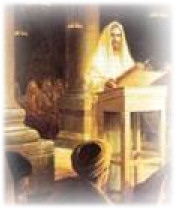
John the Baptist appeared in the wilderness and caused
an immediate stir in Judea, particularly
as a result of
his call to repentance and to baptism (Matthew 3:1-6).
John was like one of the Old Testament prophets, but he
disclaimed any importance in his own office except as
the herald of a greater person to come. His stern
appearance and uncompromising moral challenge
effectively prepared the way for the public appearance
of Yeshua (Luke 3:4-6). It is important to note that
John the Baptist’s announcement of the imminent coming
of the Kingdom (Matthew 3:2) was the same theme with
which Yeshua began His own Ministry (4:17). This shows
that John the Baptist’s work was an integral part of the
preparation for the public Ministry of Yeshua. The same
may be said of the rite of baptism, although John
recognized that Yeshua would add a new dimension in that
He would baptize with the Ruach HaKodesh and with fire
(3:11). As the forerunner of Yeshua HaMashiach, John
proclaimed that the One to follow would not only be
greater than he but would also come with high standards
of judgment (3:12). The stage was therefore set in stern
terms for the initial public act of Yeshua; His
willingness to be baptized (3:13-15; Luke 3:21).
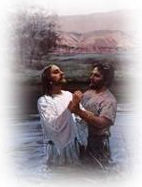 THE BAPTISM OF YESHUA THE BAPTISM OF YESHUA
John’s baptism was a baptism of repentance. Since Yeshua
submitted to this, are we to suppose that Yeshua Himself
needed to repent? If this were the case, it would mean
that Yeshua had sinned. This is contrary to other
evidence in the New Testament. But if Yeshua did not
need to repent, what was the point of His requesting
baptism at the hands of John? Yeshua had come on a
mission to others and it is possible that he
deliberately submitted to John’s baptism in order to
show that he was prepared to take the place of others.
This explanation is in line with Paul’s later
understanding of the work of Yeshua HaMashiach (2
Corinthians 5:21). Matthew is the one Gospel that
records John’s hesitation to baptize Yeshua (Matthew
3:14-15). The most important part of the baptism of
Yeshua was the Heavenly Voice, which declared pleasure
in the beloved Son (Matthew 3:17). This announcement by
YHVH was the real starting point of the public Ministry
of Yeshua. It revealed that the Ministry was no accident
or sudden inspiration on the part of Yeshua. He went
into His work with the full approval of the Father. A
further important feature is the part played by the
Ruach HaKodesh in this scene. The dovelike description
is full of symbolic meaning (3:16). The activity of the
Ruach HaKodesh in the Ministry of Yeshua, although not
emphasized in the Gospels, is nevertheless key to having
a true understanding of Yeshua HaMashiach.
THE TEMPTATION OF YESHUA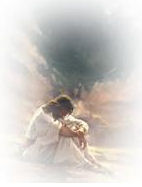
Yeshua’s baptism showed the nature of His mission. The
temptation showed the nature of the environment in which
He was to Minister (Matthew 4:1; Luke 4:1-2).
Confrontation with adverse spiritual forces
characterized Yeshua’s whole Ministry. Only Matthew and
Luke record details of the temptations to which Yeshua
was subjected by the devil. All these temptations
presented spiritual shortcuts to Yeshua’s Mission.
However, Yeshua gained the victory. Both Gospels show
that He accomplished this by appealing to Scripture.
Yeshua leading by example shows us the proper weapon
against temptation. Yeshua is also seen in this event as
a genuine human who, like all other humans, was subject
to temptation. The writer of the Hebrews notes that this
fact qualified Yeshua to act as High Priest and to
intercede on behalf of His people (Hebrews 2:18; 4:15).
He was fully YHVH and fully man. He was like us in every
way, except that He never sinned. As a result, He was
the perfect, innocent sacrifice required for our sins.
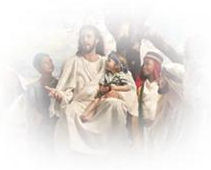 THE EARLY MINISTRY OF YESHUA IN JUDEA AND SAMARIA THE EARLY MINISTRY OF YESHUA IN JUDEA AND SAMARIA
Only John’s Gospel tells of the work of Yeshua in Judea
following His baptism. It first describes His calling of
two disciples, John and Andrew (John 1:35-39). This
event is set against the background of John the
Baptist’s announcement of Yeshua as the Lamb of YHVH who
was to take away the sin of the world (1:29). Three
others soon joined these first two disciples: Peter,
Philip and Nathanael (1:41-51). These five formed part
of the nucleus of Yeshua’s followers who came to be
known as the Twelve. One feature of John’s account is
the early recognition by the disciples of Yeshua as
HaMashiach (1:41) and Son of YHVH (1:49). Soon after
Yeshua began His Ministry in Jerusalem, John relates an
incident at Cana in Galilee in which water was turned
into wine (John 2:1-10). This event is important in
John’s account because it is the first of the “signs”
that he records (2:11). He saw Yeshua’s miracles as
signs of the truth of the Gospel rather than as mere
wonders. John sets two incidents at Jerusalem in this
initial period. The first is the cleansing of the temple
(2:13-16). Matthew, Mark and Luke all place this event
just before Yeshua’s trial, but John places it at this
early stage. The moral intention of Yeshua’s work is
seen in His driving out the moneychangers who were
inappropriately profiting from worshipers. This was
apparently acceptable in Judaism but was unacceptable to
Yeshua. The other Gospel writers imply that this
authoritative act was the event that sparked the final
hostility of His opponents. John tells the story for a
theological reason; to him, the cleansing of the temple
was a parable telling of what Yeshua had come to do. The
other incident in Jerusalem is the meeting between
Yeshua and Nicodemus (3). Nicodemus was closely
associated with Judaism, yet he was also searching for
truth. He was unable to understand however, the
spiritual truth about being born again through the
Spirit. Christians receive a new start in life; as if
they had been born again. Their spiritual rebirth marks
the moment they accept Yeshua HaMashiach as Lord and
Saviour and receive the Ruach HaKodesh. John’s story
then moves from Judea to Samaria and the story of the
Samaritan woman at the well (John 4:1-42). Yeshua used
her physical thirst to point to her deeper spiritual
thirst. She realized that Yeshua had something to offer
her that she had not previously known. As a result of
this woman’s experience and testimony, many of the
Samaritan people came to believe in Yeshua as the
Saviour of the world (4:42). In this case, John
appreciates the fuller significance of the words of
Yeshua by viewing them in the light of the resurrection.
GALILEAN MINISTRY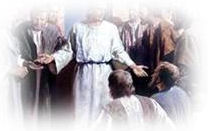
Almost all the information on this period is found in
Matthew, Mark and Luke; referred to as the synoptic
Gospels. These may be conveniently divided into three
sections. The first briefly outlines the events leading
up to the choosing of the Twelve; the second deals with
Yeshua’s withdrawal from northern Galilee; and the third
deals with his departure for Jerusalem. While the
synoptic Gospels concentrate exclusively on the events
in Galilee, John’s account indicates that there were
some visits by Yeshua to Jerusalem during this period.
Also, John records another incident at Cana, where the
son of a Capernaum official was healed. This is noted as
the second of Yeshua’s signs (John 4:54). It is chiefly
important because of the extraordinary faith of the
father, who was prepared to take Yeshua at His Word.
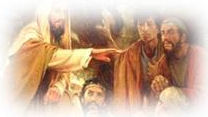 THE CALLING OF THE DISCIPLES THE CALLING OF THE DISCIPLES
In the synoptic Gospels, there is an account of the
initial call to four of the disciples to leave their
fishing boats and to become fishers of men (Matthew
4:18-22; Mark 1:16-20; Luke 5:1-11). They had already
met Yeshua and must have had some idea what was involved
in following Him. Yeshua did not at this time appoint
them to be apostles, but this call was an indispensable
step toward the establishment of the Twelve as a group.
Setting apart a particular number of disciples formed an
important part of the Ministry of Yeshua. The miraculous
catch of fish, which preceded the call of the disciples
in Luke’s account, served to highlight the superiority
of the spiritual task of “catching” people rather than
fish. Yeshua offered to teach them how to be fishers of
unbelieving men and women. Another significant call came
to Levi, otherwise known as Matthew (Matthew 9:9; Mark
2:13-14; Luke 5:27-28). As a tax collector, he was of a
different type from most of the other disciples. Jewish
contemporaries despised him because of his profession.
But his inclusion in the special circle of Yeshua’s
disciples shows the broad basis on which these men were
chosen. One of the others, Simon the Zealot, may have
belonged to a group of revolutionaries who were
religious as well as political. Even a man like Judas
Iscariot was numbered among the Twelve and he would
later betray Yeshua to His enemies for a small sum of
money. Yeshua accepted them as they were and moulded
them into men who later came to learn how to be totally
dependent on YHVH and the power of His Spirit.
SERMON ON THE MOUNT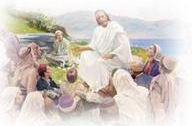
The Gospel of Matthew presents a substantial sample of
Yeshua’s teachings commonly called the Sermon on the
Mount (Matthew 5:1-7:29). Some of the same material
occurs in Luke in a different context and different
arrangement. It is possible that Yeshua often repeated
His teachings on different occasions and with different
combinations. Matthew’s record of the Sermon on the
Mount presents an impressive body of teaching, mainly
focusing on morals. Yeshua upholds the Law and at the
same time, goes beyond it. The beginning of this sermon
has been called the Beatitudes (5:3-12). It commends
moral and spiritual values. The teachings recorded in
this section were radical but not in a political sense.
The Sermon on the Mount may be taken as a fair sample of
the kind of discourses that must have abounded in the
Ministry of Yeshua.
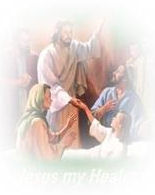 YESHUA AS HEALER YESHUA AS HEALER
Throughout the Gospels there are records of miracles
involving Yeshua healing people. There are more of these
miracles than any other type. A section in Matthew is
devoted to a sequence of healings: (Matthew 8:1-9:34), a
leper, a centurion’s servant, Peter’s mother-in-law, a
demon-possessed person, a paralyzed person, a woman with
a haemorrhage, blind men and a man who was mute. In
addition, Jairus’ daughter was raised from the dead.
This concentration of healings focuses on Yeshua as a
miracle worker, but throughout the Gospels there is no
suggestion that Yeshua healed by magical means. In some
cases an individual’s faith was acknowledged (8:10;
9:22). In at least one incident, the healing was
accompanied by an announcement of the forgiveness of the
sins of the one healed (9:2; Mark 2:5). This shows that
Yeshua considered a person’s spiritual needs to be of
greater consequence than the physical problems. Yeshua
gives us an example to follow in how to truly help and
bless people by meeting their spiritual needs. At that
time, people held a widespread belief in the powerful
influence of evil spirits over human lives. Yeshua is
seen exercising his power of exorcism over demons.
Yeshua’s Ministry was set in an atmosphere of spiritual
conflict, so the confrontations between the forces of
darkness and the Light of the World were to be expected.
Those who explain away these cases of demon-possession
in psychiatric terms miss this key feature of Yeshua’s
Ministry. Each time He exorcised a demon, He was
demonstrating a victory, which reached its most dramatic
expression in His victory over death at His
resurrection. In addition to the healing miracles in
this early section, one nature miracle is recorded, that
of the stilling of the storm (Matthew 8:23-27; Mark
4:35-41; Luke 8:22-25). This miracle focused both on the
lack of faith in the disciples and the mysterious power
of the presence of Yeshua.
YESHUA AND HIS CONTEMPORARIES
In the early stages of His Ministry, Yeshua was very
popular with the ordinary people. There are several
notices to this effect (Matthew 4:23-25; Mark 3:7-8).
This popularity showed no appreciation of the spiritual
purpose of Yeshua’s Mission (Luke 13:17). Nevertheless,
it stands in stark contrast to the nit-picking
opposition of the religious leaders, who even plotted to
kill Yeshua in the early period of His Ministry (Mark
3:6). Yeshua and the religious leaders often clashed
over the observance of the Sabbath (Matthew 12:1-14;
Luke 13:10-17; John 5:9-18). Yeshua adopted a more
human-centred view than the strict interpretation of
some other religious leaders; as in the instances when
He was criticized for healing on the Sabbath even though
the Jewish law allowed the rescuing of trapped animals
on the Sabbath (Matthew 12:11; Luke 13:15). To the
Pharisees, Yeshua was a lawbreaker. They feared that it
would undermine their authority if Yeshua’s teaching
were permitted to influence popular opinion.
PREPARING THE TWELVE
The synoptic Gospels supply lists of the names of the
twelve apostles (Matthew 10:2-4; Mark 3:16-19; Luke
6:14-16). Both Matthew and Mark name them in the context
of their exercising authority over evil spirits, showing
that these men were being called to enter the same
spiritual conflict as Yeshua. The synoptic Gospels also
give details of the instructions Yeshua gave to these
disciples before sending them to Minister in Israel
(Matthew 10:5-42; Mark 6:7-13; Luke 9:1-6). Matthew
included material that appears in a different context in
Mark and Luke, but he still shows the concern of Yeshua
to prepare His disciples for their future work. They
were to proclaim the Kingdom as He had done, but they
were not to expect that all would respond to it. They
were warned about coming hostility and even persecution.
It is important to note that Yeshua warned His disciples
against burdening themselves with material possessions.
Although the instructions given related immediately to a
tour of ministry, He was laying the foundation for the
future work of the Church.
YESHUA AND JOHN THE BAPTIST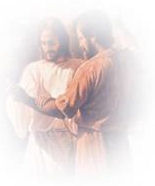
For a while, there were preaching and baptisms by both
John the Baptist with his followers and Yeshua with His
disciples (John 4:1-2). After John the Baptist was
imprisoned by Herod because of his condemnation of
Herod’s marriage to Herodias, his brother’s wife
(Matthew 14:3-4), John began to have doubts about Yeshua
(11:1-19; Luke 7:18-35). He may have been expecting
Yeshua if He really was the Mashiach, to come to his
rescue. When John sent his disciples to Yeshua to
express his doubts, Yeshua took the opportunity to tell
the crowds of the greatness of John the Baptist. He said
there was no human that was greater than John.
VARIOUS CONTROVERSIES
Yeshua did not hesitate to confront others on issues
that involved moral or religious questions. John’s
Gospel recorded a controversy over the keeping of the
Sabbath that arose when a lame man was healed on that
day (John 5:1-18). It shows once again that the law of
the Sabbath was regarded by the Pharisees as of greater
importance than concern for the physical welfare of the
lame man. This was typical of the Jewish approach and
led at once to a persecuting attitude toward Yeshua,
particularly because He claimed to be doing the work of
YHVH. A similar conflict arose after Yeshua’s disciples
had plucked grain in the fields on the Sabbath day
(Matthew 12:1-8). The Pharisees assumed that this act
was work and saw it as a reason enough to plot to
destroy Yeshua. After this event, He healed a paralyzed
man on the same Sabbath day (12:9-14). The Jewish
leaders clearly regarded Him as a direct threat to their
position among the people. The rising opposition did not
discourage Yeshua from further healings (Matthew
12:15-32), which Matthew shows as the fulfilment of
Scripture. But when Yeshua healed a blind and mute
demon-possessed man, the Pharisees charged Him with
casting out demons by Beelzebub, the prince of the
demons. Yeshua told them that to blaspheme the Ruach
HaKodesh was an unforgivable sin. This incident not only
brings out the perversity of the religious leaders but
also shows that the Ministry of Yeshua was under the
direct control of the Spirit. Other notable miracles
were the healing of the centurion’s servant, as recorded
by Luke (Luke 7:1-10) and the raising from the dead of
the widow’s son at Nain (7:11-17). The former of these
is notable because of the remarkable faith of a Gentile.
Another example of the Pharisees’ criticism was when
Yeshua attended a meal in Simon the Pharisee’s house
(Luke 7:36-50). His host had not provided for the usual
courtesies toward guests and yet was critical of Yeshua
for allowing an immoral woman to wash His feet with
tears, dry them with her hair and anoint them with
ointment. There is no doubt that most of Simon’s
colleagues would have shared his reaction, but Yeshua
did not stop the woman because He knew she was motivated
by love. He told Simon a parable to press home His
point. John records two visits by Yeshua to Jerusalem.
These are difficult to date, but they probably occurred
during the early period of the ministry. He attended the
Feast of Tabernacles (John 7:2) and the Feast of
Dedication (10:22). At these times, Yeshua taught in the
temple area and debated with the religious leaders. The
chief priests became alarmed at His presence and sent
officers to arrest Him (7:32). They were unable to do
so; instead, they themselves were captivated by His
teachings. More discussions with the Jewish leaders
followed. They charged Yeshua with being demon-possessed
(8:48). Both in this case and in the event of the
healing of the blind man (9), the hostility of the
Jewish leaders toward Yeshua is clear. When Yeshua spoke
of Himself as the Shepherd, His teaching again raised
the anger of his Jewish hearers, who took up stones to
kill Him (10:31).
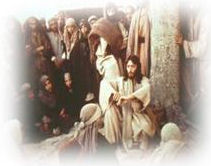 TEACHING IN PARABLES TEACHING IN PARABLES
Matthew’s Gospel gives a sample of a sermon by Yeshua
(Matthew 5:1-7:29), but Yeshua more often spoke in
parables. Matthew collected into a group some of the
parables that concern the theme of the Kingdom (13).
Luke tends to preserve parables of a different kind that
are not specially linked to the Kingdom. Mark has the
least number of parables among the synoptic Gospels, but
his writing shows little interest in Yeshua as a Moreh
(teacher). John does not relate any parables, although
he does preserve two allegories; the Sheepfold and the
Vine; which could be regarded as extended parables. The
parable was a favourite teaching form of Yeshua. Yeshua
used parables even in the middle of His more formal
sermons. The parable was valuable because everyone can
relate to a story and still be challenged. Yeshua did
not speak in parables in order to obscure His meaning.
This would be contrary to all that He aimed to do
through His work and teaching.
SIGNIFICANT EVENTS IN GALILEE
In Nazareth, there was a striking lack of response to
the ministry of Yeshua. The people of His hometown
proved so hostile that He could perform very few
miracles there (Matthew 13:53-58; Mark 6:1-6). This
incident is important because it shows that faith was
especially necessary for people to receive His healing
miracles. The one miracle performed by Yeshua that all
four Gospels describe is the feeding of the 5,000
(Matthew 14:13-21; Mark 6:30-44; Luke 9:10-17; John
6:1-15). This occasion shows the great popularity of
Yeshua at this stage of His Ministry. It also reveals
that He was mindful of the physical needs of people.
After this miracle, some wanted to make Yeshua king.
This casts considerable light on their real motives.
They were more concerned with material and political
issues than with spiritual truth. This is why Yeshua
immediately withdrew from them. When the people found
Him the next day, He instructed them about the spiritual
bread that comes from heaven (6:25-40). At this point in
John’s Gospel, Yeshua is often seen speaking with His
opponents. This style of teaching is different from the
synoptic parables but familiar in Jewish-style debate.
Many of the people found the spiritual themes in the
teaching of Yeshua too difficult to accept and ceased to
be His disciples (John 6:51-52, 60, 66). This incident
shows the unique challenge presented by Yeshua and His
teaching. Another miracle closely linked with this is
when Yeshua walked on the water, demonstrating His power
in the natural world. Many have sought to rationalize
the event by supposing that Yeshua was really walking on
the shore and that the disciples did not realize this in
the haze. But this miracle is no more extraordinary than
the massive multiplication of loaves and fishes, nor is
it inconceivable if the miracle worker was all that He
claimed to be. It has been said that Yeshua was either
telling the truth, lying incessantly or was criminally
insane. These are the three options; with two and three
being a direct contradiction to everything else we know
about HaMashiach.
LEAVING NORTHERN GALILEE
Yeshua spent a brief time in the region of Tyre and
Sidon, where He performed further healings and made it
clear that His main mission was to the house of Israel
(Matthew 15:21-28). He then moved on to Caesarea
Philippi; this was the turning point of His Ministry
(16:13-20; Mark 8:27-38; Luke 9:18-27). It was there
that Yeshua asked His disciples: “Who do people say the
Son of Man is?” This caused Peter to confess: “You are
HaMashiach, the Son of the living YHVH.” This impressive
confession led Yeshua to promise that He would build His
church on “this rock.” There has been much discussion
about the meaning of this saying. It is open to some
doubt whether Yeshua intended to build His church on
Peter, on his confession or on Peter’s making the
confession. Historically, Peter was the instrument YHVH
used for the entrance into the Church of both Jews and
Gentiles (Acts 2; 10). There is no doubt about Yeshua’s
intention to found a Church, since the word occurs again
in Matthew 18:17. Despite the glorious revelation of
Yeshua on this occasion, He took it as an opportunity to
begin to inform His disciples of His death and
resurrection (16:21-23). This revelation of Yeshua was
considerably reinforced by the event known as the
Transfiguration, when Yeshua was changed in appearance
in the presence of three of His disciples (Matthew
17:1-8). It was natural for them to want to keep this
glorious vision of Yeshua for themselves, but the vision
vanished as rapidly as it came. Its purpose was
evidently to show the three leading disciples something
of the nature of Yeshua, which was hidden by His normal
human form. A further feature of the vision was the
appearance with Yeshua of Moses and Elijah,
representatives of the Law and the Prophets. After the
Transfiguration, Yeshua made two predictions concerning
His death. These announcements were confusing to the
disciples. In Matthew 16, when Yeshua mentioned His
death, Peter attempted to rebuke Yeshua and was rebuked
by Yeshua in kind.
When Yeshua mentioned His death again in Matthew 17,
Matthew noted that the disciples were greatly distressed
(17:23), while Mark and Luke mentioned the disciples’
lack of understanding (Mark 9:32; Luke 9:45). Yeshua was
approaching the cross with no support from those closest
to Him. It is not surprising that when the hour arrived
they all betrayed Him. After the Transfiguration
revealed that Yeshua was greater than Moses and Elijah
and in fact was the beloved Son of YHVH, He was asked to
pay the temple tax (Matthew 17:24-27). This incident
illustrates the attitude of Yeshua toward the
authorities and practical responsibilities. He paid the
tax, although He did not acknowledge any obligation to
do so. The method of payment was extraordinary, for it
involved the miracle of the coin in the fish. But the
greater importance of the incident is Yeshua’s
independence from the Jewish law. Luke devotes more than
half his Gospel to the period that begins with Yeshua
leaving Galilee and ends with His death and resurrection
in Jerusalem. In this section of his Gospel, Luke
introduces a great deal of material that does not occur
elsewhere. We can do no more than summarize some of the
more striking items that throw light on the life of
Yeshua. In addition to the mission of the Twelve, Luke
records the mission of the Seventy (or Seventy-two; see
Luke 10:17-20). Luke records special parables in this
section like the Good Samaritan (10:29-37), the lost
sheep (15:3-7), the lost coin (15:8-10) and the prodigal
son (15:11-32). As Yeshua moved toward Jerusalem, He was
concerned with developing the spiritual life of His
disciples. He was mindful of the fact that He would not
be with them long and wished to prepare them for the
future. He taught them about prayer (11:1-13), the
Father’s care for them (12:13-34) and preparation for
the coming of the Son of Man (12:35-56).
ON THE WAY TO JERUSALEM
On the approach to Jerusalem, Yeshua visited both
Jericho and Bethany. At Jericho he healed Bartimaeus
(Luke 18:35-43) and had a fruitful encounter with
Zacchaeus, who reformed his ways as a tax collector
(19:1-10). Bethany was the home of Mary, Martha and
their brother Lazarus, whom Yeshua had raised from the
dead (John 11). Yeshua spent His remaining days in
Jerusalem but returned each night to stay at Simon the
Leper’s house in Bethany in the presence of those who
loved Him (Matthew 26:6). It was there that a woman
anointed His Body with costly ointment. This was a
controversial and prophetic act preparing Yeshua for His
burial (26:6-13).
THE FINAL DAYS IN JERUSALEM
All four Gospels relate the entry of Yeshua into
Jerusalem (Matthew 21:1-11; Mark 11:1-10; Luke 19:29-38;
John 12:12-15). At this time, crowds greeted Yeshua and
praised Him as their king. This welcome stands in stark
contrast with the crowd’s later cry for His death. In
fact, it was the second crowd that was doing YHVH’s
bidding, since Yeshua had not come to Jerusalem to reign
but to die. The synoptic Gospels place the cleansing of
the temple as the first main event following Yeshua’s
entry into the city (Matthew 21:12-13; Mark 11:15-17;
Luke 19:45-46). The clouds of opposition had been
thickening, but the audacity of Yeshua in clearing out
the moneychangers from the temple area was too much for
the authorities (Mark 11:18; Luke 19:47). The
crucifixion loomed closer. Further controversies
developed between Yeshua and the Pharisees and Sadducees
(Matthew 21:23-22:45). In several cases, trick questions
were posed in order to trap Yeshua, but with consummate
skill He turned their questions against them. The
opposition eventually reached the point where they dared
not ask Him any more questions (22:46). Nearing His
final hour, Yeshua took the opportunity to instruct His
disciples about future events, especially the end of the
world. He reiterated the certainty of His return and
mentioned various signs that would precede that coming
(Matthew 24-25; Mark 13; Luke 21). The purpose of this
teaching was to provide a challenge to the disciples to
be watchful (Matthew 25:13) and diligent (25:14-30).
This section prepares the way for the events of the
arrest, the trial, the scourging and crucifixion that
followed soon after. But first we must note the
importance of the Lord’s Supper. When Yeshua sat at the
table with His disciples on the night before He died, He
wished to give them a picture of His death’s
significance (Matthew 26:26-30; Mark 14:22-25;
Luke22:19-20; 1 Corinthians 11:23-26). The use of the
bread and wine for this purpose was a happy choice
because they were basic elements in everyday life.
Through this symbolic significance Yeshua gave an
interpretation of His approaching death; His Body broken
and His blood poured out for others. It was necessary
for Yeshua to provide this reminder that His sacrificial
death would seal a completely New Covenant. Each time we
celebrate communion, we help prevent the Church from
losing sight of the centrality of the cross. John’s
Gospel does not tell the story of the Last Supper.
Nevertheless, it does record a significant act in which
Yeshua washed the feet of the disciples as an example of
humility (John 13:1-20). He impressed on the disciples
the principle of service to others. John follows this
display of humility with a series of teachings Yeshua
gave on the eve of the Passion (chapters 14-16). The
most important feature of this teaching was the promise
of the coming of the Ruach HaKodesh to the disciples
after Yeshua had gone. Even with His mind occupied by
thoughts of approaching death, Yeshua showed Himself
more concerned about His disciples than about Himself.
This is evident in the prayer of Yeshua in John 17. All
the Gospel writers refer in advance to the betrayal by
Judas (Matthew 26:21-25; Mark 14:18-21; Luke 22:21-23;
John 13:21-30), which prepares readers for the final
stages of Jesus journey to the cross.
THE BETRAYAL AND ARREST
The various outbursts of popular support were soon over
and the determined opposition seemed to resume control.
In John’s Gospel, the sense of approaching climax is
expressed in terms of “His hour” (John 13:1). When this
at length comes, the betrayal and arrest are seen as
part of a larger plan. From the upper room where the
Last Supper was eaten, Yeshua went straight to the
Garden of Gethsemane (Matthew 26:36-46; Mark 14:32-42;
Luke 22:40-46), where He prayed to His Father with deep
intensity and agony. It cost Yeshua to identify Himself
with man’s need. He prayed for the cup of suffering to
pass from Him, but at the same time He submitted to the
Father’s will. The three disciples He took with Him all
fell asleep, while one of His other disciples, having
betrayed his master, appeared at the gates at the head
of the group who had come to arrest Him. At the moment
of confrontation with Judas, Yeshua exhibited an amazing
dignity when He addressed the betrayer as His “friend”
(Matthew 26:50). He offered no resistance when He was
arrested and chided the crowd of people for their swords
and clubs (26:55).
THE TRIAL
Yeshua was first taken to the house of Annas, one of the
high priests, for a preliminary examination (John
18:13). During His trial, He was scorned by His enemies
and one of His disciples Peter, denied Him three times
(Matthew 26:69-75, Mark 14:66-72; Luke 22:54-62; John
18:15-27), as Yeshua predicted he would (Matthew 26:34;
Mark 14:30; John 13:38). The official trial before the
Sanhedrin was presided over by Caiaphas, who was puzzled
when Yeshua at first refused to speak. At length Yeshua
predicted that the Son of Man would come on the clouds
of heaven; this was enough to make the high priest
charge Him with blasphemy (Mark 14:62-64). Although He
was spat upon and His face was struck, Yeshua remained
calm and dignified. He showed how much greater He was
than those who were treating Him with contempt. The
further examinations before Pilate (Matthew 27:1-2; Mark
15:1; Luke 23:1; John 18:28) and Herod (Luke 23:7-12)
were more examples of injustice. Again Yeshua did not
answer when asked about the charges before either Pilate
(Matthew 27:14) or Herod (Luke 23:9). He remained
majestically silent, except to make a comment to Pilate
about the true nature of His Kingship (John 18:33-38).
The pathetic governor declared Yeshua innocent, offered
the crowds the release of either Yeshua or Barabbas and
then publicly disclaimed responsibility by washing his
hands. Pilate then had Yeshua scourged and handed Him
over to be crucified.
THE CRUCIFIXION
The soldiers’ mocked Yeshua (Matthew 27:27-30), mixing a
royal robe with a painful crown of thorns (Mark 15:17)
and compelling a passerby to carry the cross (Luke
23:26). They then nailed Yeshua to the cross and played
a cruel game, casting lots for His garment (John
19:23-24). They scornfully challenged Him to use His
power to escape (Matthew 27:40-44). But against this is
Yeshua’s concern about the repentant criminal who was
crucified with Him (Luke 23:39-43). He also expressed
concern for His mother (John 19:25-27), prayed for
forgiveness for those responsible for the Crucifixion
(Luke 23:34) and made one final triumphant cry (Mark
15:37). He showed a nobility of mind that contrasted
strongly with the meanness of those about Him. A few
observers showed a better appreciation, like the
centurion who was convinced of Yeshua’s innocence
(15:39) and the women who followed Him and stood at a
distance (Matthew 27:55-56). At Yeshua’s forsaken cry
(Mark 15:34), there was darkness and an earthquake, as
if nature itself were acknowledging the significance of
the event. Even the temple veil was torn in two, as
though it no longer had any right to bar the way into
the Holy of Holies (Matthew 27:51). Yeshua’s death had
paved the way for all people to freely enter YHVH’s
presence and worship Him. He paid for our sins and
brought us back to YHVH.
THE BURIAL, RESURRECTION AND ASCENSION
Yeshua’s Body was placed in a tomb that belonged to
Joseph of Arimathea. Joseph was assisted by Nicodemus in
laying the Body to rest (Matthew 27:57-60; John 19:39).
But the tomb played only an incidental part in the
resurrection. The Gospel writers concentrate on the
appearances of Yeshua not only on the day of
resurrection but also afterward. The disciples were
convinced that Yeshua was alive. Some like Thomas, had
doubts to overcome (John 20:24-29). Others like John,
were more ready to believe when they saw the empty tomb
(20:2-10). The first to see the risen Lord was a woman,
Mary Magdalene (Matthew 27:61; Matthew 28:1, 5-9), whose
presence at the cross put to shame those disciples who
had run away (Matthew 26:56; John 19:25). We may note
that in His glorified, risen state Yeshua was in a human
form, although He was not at once recognized (John
20:15-16). The appearances were occasions of both joy
and instruction (compare to Luke 24:44 and Acts 1:3).
The Resurrection in fact, had transformed the
Crucifixion from a tragedy into a triumph. His Ascension
into heaven came forty days after His resurrection.
Yeshua ascended into heaven to join His Father in glory
(Luke 24:51; John 20:17; Acts 1:9-11). |

